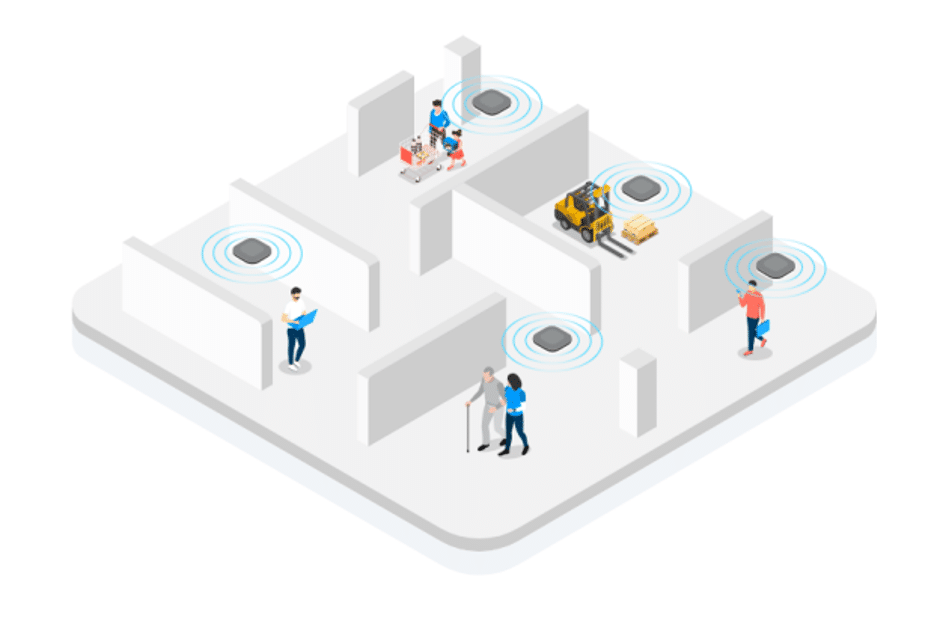Indoor positioning systems have gained a lot of popularity in many sectors in recent years. An Indoor Positioning System (IPS) is a technology that enables the locating and tracking of objects or people within enclosed spaces, e.g. buildings, warehouses, hospitals, shopping malls, etc. IPS has become very popular because of its wide variety of benefits. However, to ensure the best results, it is important to choose the right technology for it. This article explores the key factors to consider when choosing one, the importance of considering environmental needs, product recommendations, and more.
Factors to Consider When Choosing IPS Technology
Choosing the right IPS technology requires careful consideration of many factors. It is recommended that you keep the following factors in mind to make an informed decision:
1. Accuracy and Precision Requirements
Make sure to determine the level of accuracy and precision required for your application. Different IPS technologies provide different levels of accuracy, so it is important to ensure that the specific capabilities of the IPS technology align with your requirements for accuracy to ensure the best results.
2. Scalability and Coverage Area
Assess the scalability of the indoor positioning system technology and its ability to cover your desired area. Consider whether it can handle your current requirements and accommodate future growth.
3. Infrastructure and Hardware Considerations
Evaluate the infrastructure and hardware requirements of the indoor positioning system technology. Key factors you should consider here include installation complexity, compatibility with existing infrastructure/hardware, and maintenance needs.
4. Cost and Budget Constraints
Understand your budget constraints and assess the cost-effectiveness of different IPS technologies. When comparing them, consider both upfront costs as well as ongoing expenses, e.g. support and maintenance.
5. Integration with Existing Systems and Software
Determine how well the indoor positioning system technology can integrate with your existing systems and software. Seamless integration is crucial to ensure optimal system efficiency.

Assessing the Specific Needs of the Environment is Crucial
In addition to the above-listed factors, it is highly recommended that you assess the specific needs of the environment where the indoor positioning system will be implemented. The following are some key considerations:
1. Understanding the Indoor Environment Characteristics
Gain a deep understanding of the physical characteristics of the indoor environment. Key factors that matter here include building layout. materials, and obstructions that can affect the performance of your chosen IPS technology.
2. Identifying Specific Use Cases and Requirements
Identify the specific use cases, e.g. whether you need personal monitoring, an indoor tracking system for asset tracking, or a combination of both. This will help you narrow down the technology options that best suit your requirements.
3. Conducting a Feasibility Study or Pilot Project
Conduct a feasibility study or pilot project before making a large-scale deployment to evaluate the performance of different indoor positioning systems and location tracking device technologies in your specific environment. This will allow you to gain valuable insights so you can make an informed decision.
4. Collecting User Feedback and Evaluating Results
User satisfaction and experience are crucial factors in determining the success of an indoor positioning system implementation. So, be sure to involve end-users in the evaluation process and collect their feedback.
Conclusion
Overall, choosing the right indoor positioning system technology is crucial to ensure reliable and accurate tracking within indoor spaces. Apart from considering the above-listed factors, your choice of an IPS solution provider is also very important. To achieve the best results, make sure to choose a reputed supplier that specializes in offering innovative indoor positioning system solutions featuring advanced technology. The leading brand in this industry, Blueiot, is a top choice.

As one of the world’s leading indoor positioning companies, Blueiot offers a wide range of real-time indoor location system services. The indoor positioning systems from the brand utilize RTLS technology and Bluetooth Angle of Arrival (AoA) positioning algorithm. The use of these advanced technologies makes Blueiot’s IPS solutions much more accurate and reliable than traditional methods. The brand offers a comprehensive set of software and hardware for tracking objects and individuals. Key advantages include high accuracy, low cost, more coverage, and low power consumption. All in all, Blueiot’s AoA RTLS is a great choice for organizations looking for a reliable indoor positioning system solution. Visit the company’s website today to start revolutionizing your indoor tracking and monitoring capabilities.

